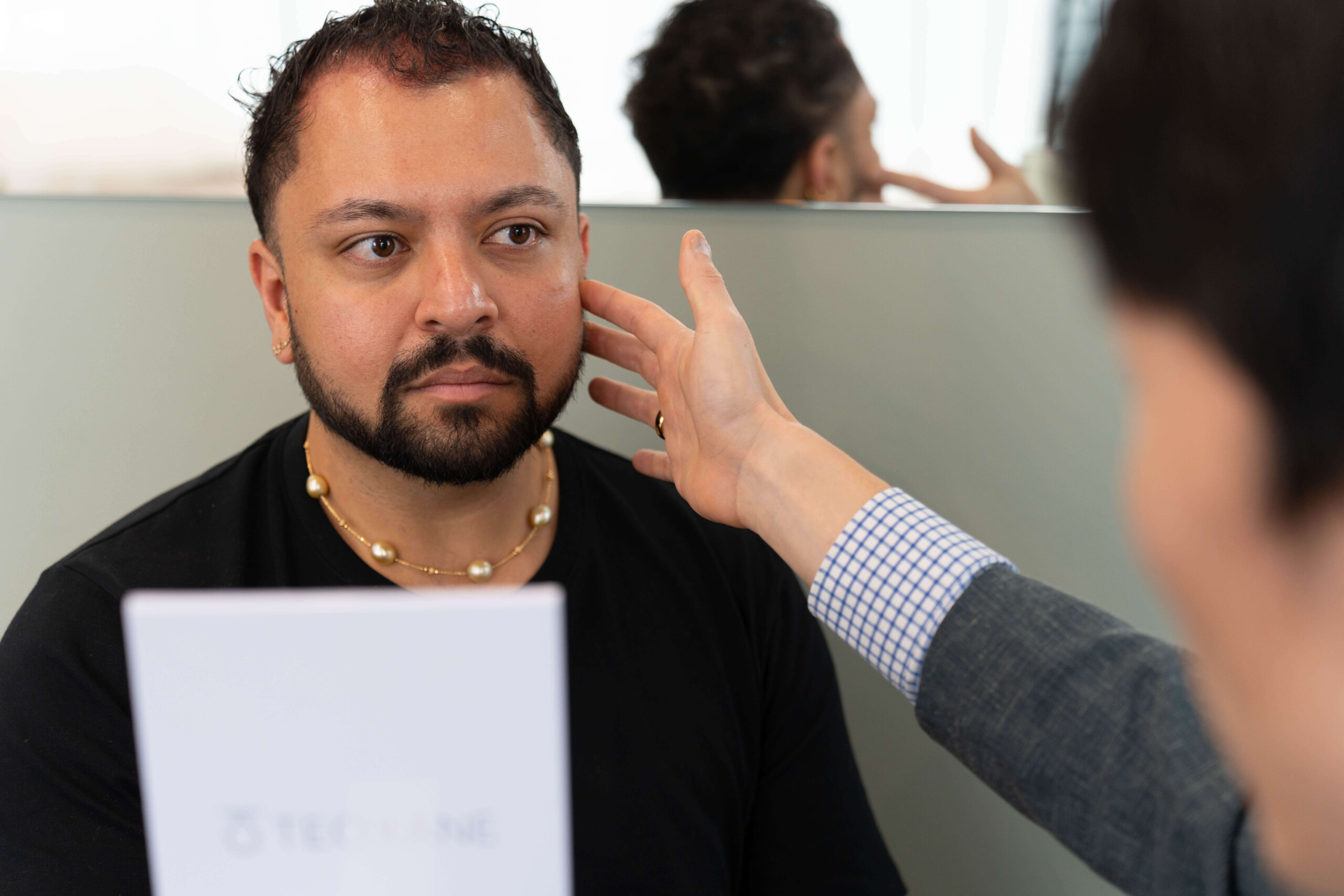Depending on your individual needs, goals and medical history, there are several non-surgical Ozempic face treatment options that may work for you. Each has different results, risks and requirements, so we recommend you consult with a qualified medical professional to determine the most suitable treatment for you.
Volume Replacement
Restores volume and structure where fat loss is most visible, such as the cheeks, temples and jawline.
- Efficacy: May provide immediate contour and support
- Downtime: Minimal, usually 1-2 days
- Maintenance: 6-12 months depending on metabolism
- Risks: Mild bruising or swelling, rare vascular events
Collagen-Stimulating Treatments
Rebuilding lost collagen can give you longer-term lift and firmness.
- Efficacy: May provide noticeable improvement over three to six months
- Plan: 2-3 sessions spaced 6- 8 weeks apart
- Longevity: 12-24 months
- Risks: Temporary swelling or mild nodules if aftercare not followed
Skin Tightening Treatments
RF Microneedling (Morpheus8) uses concentrated radiofrequency energy to stimulate collagen and firm lax skin.
- Efficacy: Results are typically seen within a few weeks after your first treatment, with continued improvements often seen over the next 2–3 months as collagen production increases.
- Downtime: Minimal, you may experience redness and swelling for 24–72 hours post-treatment
- Plan: 3 sessions spaced a month apart
Fractional Laser
Improves fine lines, texture and skin contraction. Depending on the degree of skin laxity, ablative (Co2) or non-ablative 1540 fractional laser can help.
- Efficacy: For Co2 laser, results may be seen within 2-4 weeks, final results at 3-6 months. For non-ablative laser, best results may be seen 12 weeks after the final session in your course of treatments.
- Downtime: from 3-7 days depending on settings
- Plan: 1-3 sessions, spaced 4-6 weeks apart
Combined Approach
At Contour Clinics, we often combine treatments for the best results. A multi-faceted approach can be the most effective treatment for Ozempic face.
First, undergo skin tightening and collagen stimulation.
Once tissues have rebuilt, adopt volume restoration.
Lastly, create sustainable ongoing skincare and nutrition plans – these are key to maintaining results. Keeping your skin hydrated and its barrier strong is especially important during rapid weight loss. We recommend The Ilumae Quartet, which combines collagen-stimulating peptides, ceramides to strengthen the skin’s moisture barrier, niacinamide to soothe and repair, and hyaluronic acid to keep the skin nourished and resilient as it adapts to change.






